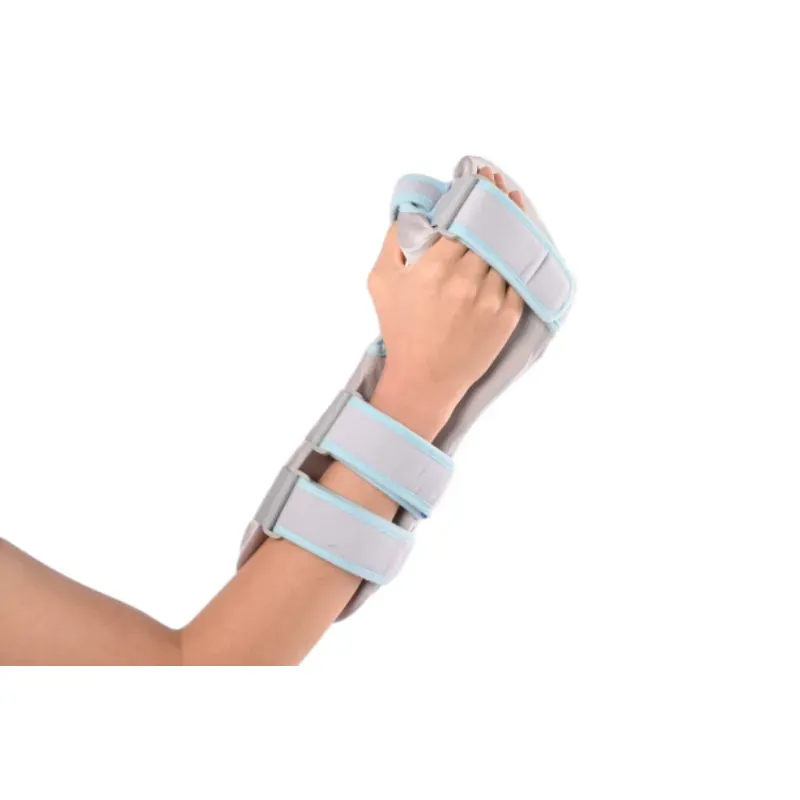Essential Guidelines for Safe Use and Maintenance of Wrist Splints
Wrist splints are invaluable tools for managing various wrist conditions such as rheumatoid arthritis, sprains, and other injuries. Whether you’re using a wrist splint for rheumatoid arthritis or a universal wrist splint for a sprain, proper use and maintenance are crucial for effective recovery. In this article, we’ll explore the best practices for using wrist splints safely and ensuring their longevity, so you can maximize their therapeutic benefits.
Choosing the Right Wrist Splint for Your Condition
One of the first steps to ensuring the safe use of a wrist splint is selecting the correct one for your specific condition. For individuals dealing with rheumatoid arthritis, a wrist splint for rheumatoid arthritis is designed to alleviate joint inflammation and pain by providing stable support to the wrist and hand. It is essential to consult with a healthcare provider to determine whether a wrist splint for sprain or a universal wrist splint is more suitable for your needs. A poorly chosen splint can hinder recovery, so make sure it is tailored to your unique condition.
For a wrist splint to provide effective support, it must fit properly. A wrist splint for sprain should offer adequate stabilization without being too tight or too loose. If the splint is too tight, it could restrict blood flow and cause discomfort or even damage the skin. Conversely, if it’s too loose, it won’t provide the necessary support to the injured area. For individuals using a universal wrist splint, ensure that the splint is adjustable to fit your wrist size and shape comfortably. Proper fitting also ensures that the splint works efficiently, aiding in healing and reducing pain or inflammation.
Daily Use Guidelines for Wrist Splints
Wrist splints are often worn for long periods to ensure effective healing. When wearing a wrist splint for rheumatoid arthritis or other types, it’s important to follow the recommended wearing schedule provided by your healthcare professional. Wearing a splint too long without giving your skin a break can cause irritation or skin damage. On the other hand, removing the splint too frequently can delay recovery. Be mindful of the prescribed duration for wear, and avoid using your wrist in ways that could strain the injured area while wearing the splint.
Additionally, check for any signs of discomfort or pressure points, as these can affect the healing process. If you experience any unusual pain, swelling, or redness, remove the splint and contact your healthcare provider to reassess its fit and usage.
Caring for and Maintaining Your Wrist Splint
Proper maintenance of your wrist splint can extend its life and ensure it remains effective. Depending on the material of your wrist splint, follow the manufacturer’s instructions for cleaning. Most splints can be wiped down with a damp cloth or mild soap solution, while others may require disassembly for a more thorough cleaning. Avoid using harsh chemicals or abrasive materials that could damage the splint's surface or compromise its support.
If your universal wrist splint or any other splint has removable parts, such as straps or padding, make sure to inspect and clean them regularly. This prevents the build-up of bacteria, sweat, or dirt that could irritate the skin. Additionally, check for any wear and tear on the splint itself, such as cracks or weakened straps, and replace any damaged components promptly to maintain the splint’s effectiveness.
Storage and Safety Precautions about Wrist Splint
When not in use, store your wrist splint in a cool, dry place to prevent damage. Avoid placing it in areas with extreme temperatures, such as near heat sources or in direct sunlight, as this could weaken the materials. Ensure that the splint is stored away from sharp objects or heavy items that could cause it to bend, break, or become misshapen.
If your wrist splint for sprain has metal components or other delicate parts, be extra cautious during storage. A safe, clean environment will help prevent any unnecessary damage, ensuring the splint remains in optimal condition for use when you need it.
Lastly, if you’re using a wrist splint for rheumatoid arthritis, a wrist splint for sprain, or any other type, it’s essential to schedule regular checkups with your healthcare provider. They can monitor your recovery progress, suggest adjustments to your treatment plan, and ensure that the splint continues to provide the necessary support. In some cases, your provider may recommend a different type of splint or modify the fit as your condition improves or changes.
Regular guidance ensures that your splint use remains effective and that you’re not unknowingly contributing to further injury or discomfort.
In conclusion, wrist splints are incredibly helpful in managing conditions like rheumatoid arthritis, sprains, and other injuries. To maximize their effectiveness, it's essential to choose the right splint, ensure a proper fit, follow usage guidelines, maintain the splint properly, and store it safely. With the right care, wrist splints can be a key element in your recovery process, helping to reduce pain, improve functionality, and accelerate healing.

-
Top Back Support SolutionsNews Jul.28,2025
-
Support for Hand and Thumb HealthNews Jul.28,2025
-
Powerful Back Support SolutionsNews Jul.28,2025
-
Essential Back Support SolutionsNews Jul.28,2025
-
Effective Hand and Wrist Support SolutionsNews Jul.28,2025
-
Comprehensive Thoracic and Lumbar SupportNews Jul.28,2025





















